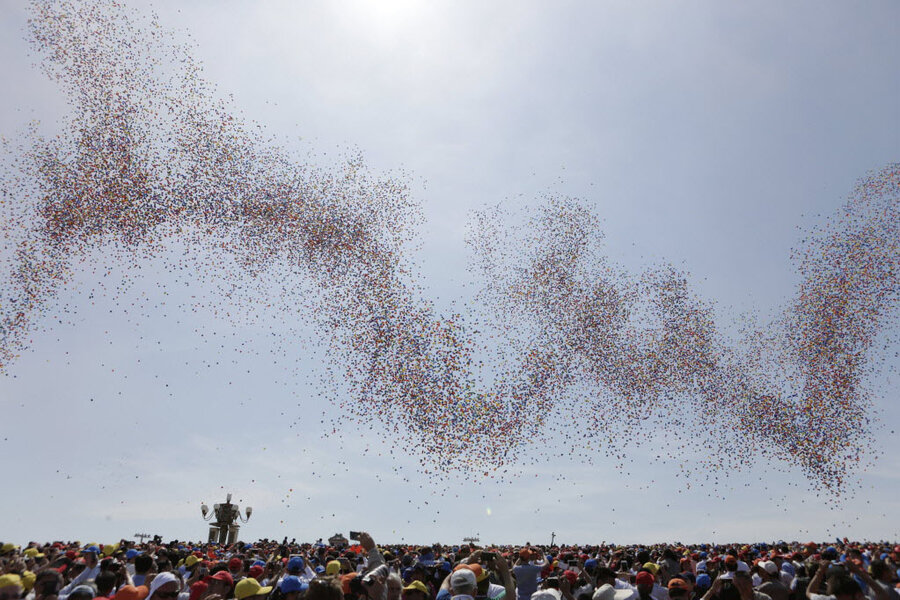Black and blue then back again: What’s going on with Beijing skies?
Loading...
Call it a temporary fix.
In the two weeks leading up to a much-anticipated military parade on Thursday – a spectacle celebrating 70 years since Japan’s surrender in World War II – Beijing’s notoriously polluted skies were clear and blue. Less than a day after the event, however, residents awoke to the familiar sight and smell of gray smog in the Chinese capital.
The sudden shift has left residents “less than thrilled” by the idea that authorities will only clean up the city during big events, the Los Angeles Times reported. It also highlights the challenges Beijing faces in achieving and maintaining its goals to significantly reduce carbon usage ahead of a December international climate change conference in Paris.
“The ‘parade blue’ was gone in an instant, like a piece of magic,” posted a user on Chinese social media site Weibo, according to the South China Morning Post. “I’ve got used to the beautiful blue skies and suddenly feel a sense of insecurity.”
Ahead of the parade, officials suspended or restricted operations in about 10,000 factories and 40,000 construction sites in Beijing and neighboring provinces, and restricted the city’s 5 million vehicles to driving every other day, according to Chinese news agency Caixin. The measures took effect in late August and ushered in a 15-day stretch of relatively clear air.
The result: Beijing residents and visitors were treated to “parade blue” skies on Sept. 3, during which the city’s air quality index – a widely accepted gauge for measuring the health risks in air – clocked in at a healthy 17 out of 500, according to the LA Times. Levels of PM2.5, particulate matter considered extremely dangerous to human health, dropped to record low concentrations for eight straight days.
"For 15 days, residents have experienced good air quality," said Zhang Dawei, director of the Beijing Municipal Environmental Monitoring Center, to China Daily. "It was as good as the annual index in some metropolises in developed countries, such as Paris, London, Moscow and Singapore."
The government eased the restrictions at midnight following the parade. By Friday, the air quality index was up to nearly 160 in parts of the city, and the smog had returned.
The world’s largest emitter of greenhouse gases, China’s coal use has escalated as its economy has boomed. In 2013, the country was responsible for 29 percent of the world’s carbon emissions, The Christian Science Monitor reported in July.
"But public concern about air pollution has pushed China to cut its use of coal, which fell nearly 3 percent in 2014, the first drop in more than a decade.
The sudden decline has led some analysts to speculate that China’s carbon emissions could peak sooner than 2030. Many argue the proposed steps still fall short of what the country could and should achieve.
Fuqiang Yang, a senior adviser on climate change and energy policy in Beijing for the Natural Resources Defense Council, says it’s “highly possible” for emissions to stop rising as early as 2025."
Beijing’s switch from smoggy to clear and back again, however, is not new: Authorities achieved a similar transformation last autumn, when China hosted the high-profile Asia-Pacific Economic Cooperation summit. Residents described the sky then as “APEC blue” – a phrase some now associate, in jest, with short-lived relationships, CNN reported.
Others took a more serious approach, weighing the costs of economic development against damage to the environment.
“Military Parade Blue is gone; in its place is our ‘Normal Status Gray,’ ” one Weibo user wrote, according to The New York Times. “Residents in Beijing will start cursing again. Do we want development? Or do we want the environment? This all shows that the pollution is caused by human activities, and that it’s possible to control.”






